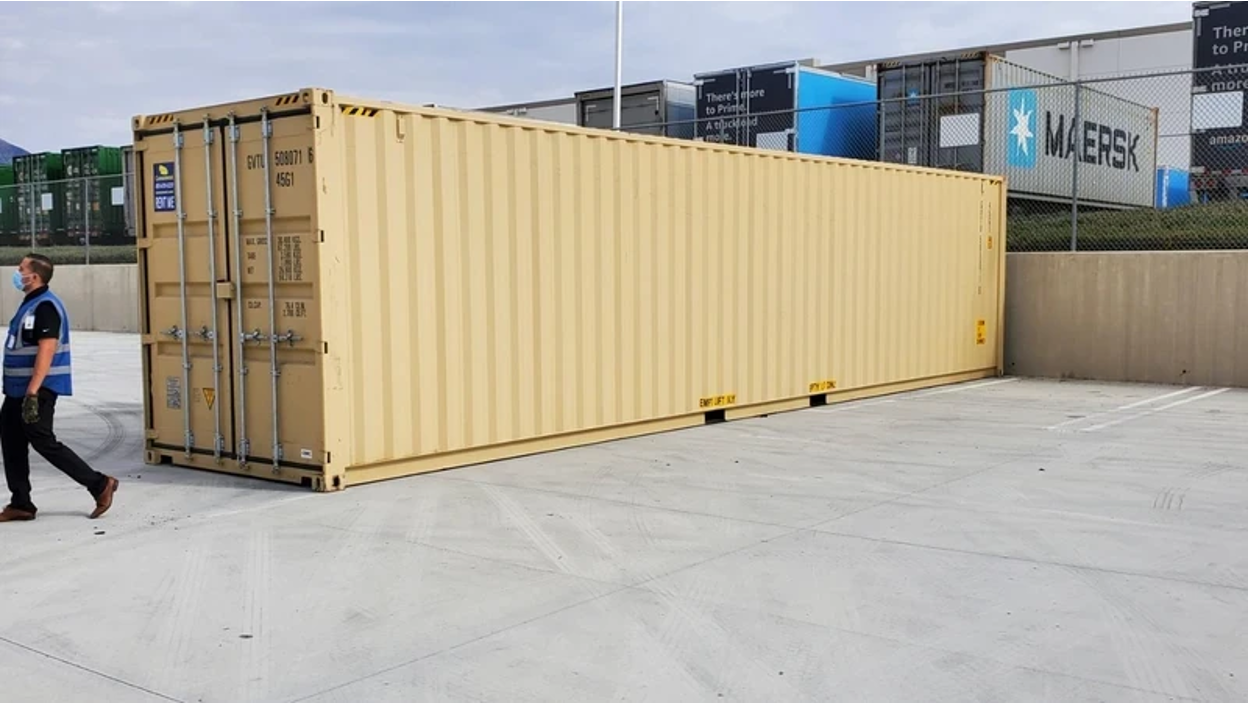Montana Shipping Container Zoning Laws, Permits & Building Code Requirements
Get a quoteMontana Shipping Container Zoning Law, Permit & Building Code Guide
Key Takeaways
- Shipping containers in Montana must comply with local zoning laws, which vary by municipality.
- Building codes have been developed to maintain safety and structural integrity, especially when modifying containers.
- Consulting your local authority is important for understanding the exact requirements in your area.
- Conexwest provides high-quality shipping containers with excellent customer service.
Shipping Container Zoning Laws, Permits, & Building Code Requirements In Montana
Zoning Laws
Zoning laws dictate where shipping containers can be placed and what they can be used for. Here are some points to keep in mind:
- Permitted Uses: In many residential zones, shipping containers may only be used as accessory structures (e.g., for storage) rather than as primary residences. Some areas may allow them as accessory dwelling units (ADUs) under stricter conditions.
- Setback Requirements: Containers must often adhere to setback regulations, which means they must be at a certain distance from property lines and other structures. The exact distance varies by municipality.
- Visibility and Aesthetics: Many municipalities require that shipping containers be placed in less visible areas of the property, such as the rear yard, and often necessitate screening from public view through landscaping or fencing.
Permit Process
To legally place a shipping container on your property, you typically need to follow these steps:
- Preparation: Gather necessary documents such as site plans, intended use descriptions, and any engineering certifications.
- Application Submission: Submit an application to the local building department along with the required documents and fees.
- Plan Review: The local authority will review your plans for compliance with zoning laws and building codes.
- Inspections: Various inspections may be required during construction for adherence to safety standards.
- Certificate of Occupancy: After passing inspections, you will receive a certificate allowing you to use the container as intended.
Building Code Compliance
Montana follows a state-wide building code that includes standards for structural integrity, fire safety, and energy efficiency. Its key points include:
- Structural Requirements: Containers must be structurally sound and capable of withstanding local weather conditions.
- Modification Standards: If modifying a container for residential use (e.g., adding windows or insulation), all changes must comply with Montana's building codes.
Here are some examples of regulations in some municipalities of Montana:
Billings
In Billings, permanent shipping containers are classified under specific zoning regulations:
- Location Restrictions: Containers must be located on the rear half of the lot and cannot obstruct required parking or loading spaces.
- Quantity Limits: One permanent shipping container is allowed per lot of one acre or less. Additional containers may be permitted for larger lots.
- Condition Standards: Containers must be maintained in good condition and cannot display any signage.
Whitefish
- Placement Rules: Shipping containers must be placed behind existing buildings to minimize visibility from the street.
- Accessory Use Only: Containers are only permitted for accessory uses to existing businesses and not for stand-alone use.
Conexwest, a leader in shipping and storage solutions based in Northern California, offers new, used, and refurbished containers from 10ft to 45ft, with fast delivery within 3-7 days and container fabrication options like adding shelves and locks. We serve over 10,000 customers nationwide, including prestigious clients like the U.S. Navy and Google. As an ISO 9001 and AWS-certified company, we ensure top quality and competitive pricing. |
Tips For Complying With Montana’s Regulations

Expert help of Conexwest can assist you in easily complying with Montana’s shipping container regulations
- Understand Zoning Classifications: Before placing a shipping container, determine the zoning classification of your property. Check if your area allows containers for residential or commercial use.
- Consult Local Planning Offices: Engage with local authorities early in the process to clarify the exact regulations regarding shipping containers in your municipality.
- Follow the International Building Code (IBC) and International Residential Code (IRC): Your container must meet safety standards regarding structural integrity, fire safety, and energy efficiency if used as a dwelling.
- Consider Limitations on Dimensions: Many areas impose size restrictions on containers (commonly no larger than 8' x 20').
- Condition of Containers: Use containers that are free from rust, dents, and graffiti to comply with aesthetic standards.
- Integrate Utilities Carefully: If your container will be used as a living space, check that your plumbing, electrical systems, and insulation meet local codes.
- Consult with Experts: Consider working with our experts who are familiar with Montana’s local regulations to streamline the application process.
- Keep Records: Maintain copies of all applications, permits, correspondence with local authorities, and any inspections conducted throughout the process.
Choose Conexwest For Your Shipping Container Needs

Conexwest is your one-stop solution for all your shipping container needs
Conexwest is a leading provider of shipping and storage solutions across the US with a comprehensive selection of shipping containers. Here’s how we can help you:
- Sales of Shipping Containers: New, used, and refurbished containers in sizes from 10ft to 45ft.
- Custom Modifications: Modifications include insulation, electrical systems, windows, and doors.
- Delivery Services: Fast and reliable delivery options anywhere in the US.
- Container Rentals: Flexible rental options for short-term and long-term needs.
Why Choose Conexwest for Your Shipping Container Needs
- Quality Assurance: We provide high-quality containers that undergo rigorous inspections before delivering.
- Expert Guidance: We can help you understand Montana's shipping container regulations for easy compliance with local zoning laws and building codes.
- Transparent Pricing: We provide upfront pricing with no hidden fees to make budgeting straightforward for you.
- Exceptional Customer Service: Our dedicated team is here to assist you at every step of the process - from container selection to delivery.
Frequently Asked Questions (FAQs)
- What permits are needed for shipping containers in Montana?
The permits required can vary based on your location and the intended use of the container. Generally, you will need:
- Building Permit: Required for permanent installations.
- Temporary Use Permit: May be necessary for short-term placements.
- Zoning Permit: For compliance with local land use regulations.
- Can I modify a shipping container?
Yes, you can modify a shipping container, but modifications must comply with local building codes. So, make sure that any modifications don’t compromise the container’s structural integrity and are documented in your permit application.
- Are there restrictions based on property type (residential vs. commercial)?
Yes, there are different regulations based on whether the container is placed on residential or commercial property. For commercial uses, the IBC applies, which includes stricter requirements for fire safety and accessibility. Residential uses typically fall under the IRC, which focuses on one and two-family dwellings. Always check local codes for guidelines applicable to your property type.
- What happens if I don’t comply with the regulations?
Failure to comply with zoning laws and building codes can result in penalties such as fines, legal action, or removal of the container from your property. Thus, it’s important to follow all local regulations to avoid these issues.
- What types of shipping containers does Conexwest provide?
We provide a wide range of shipping containers, including:
- Standard Containers: Available in sizes from 10 to 45 feet.
- Refrigerated Containers: Ideal for temperature-sensitive goods.
- Insulated Containers: Designed for climate control.
- Modified Containers: Customizable options for structures such as office spaces or retail setups.
